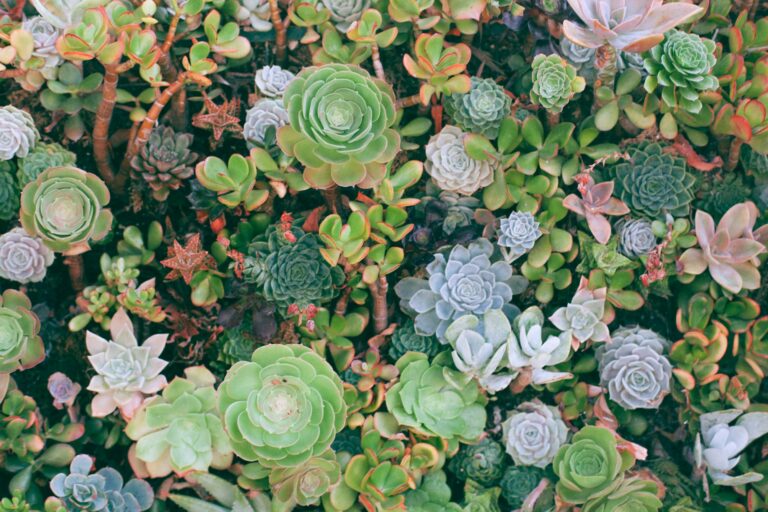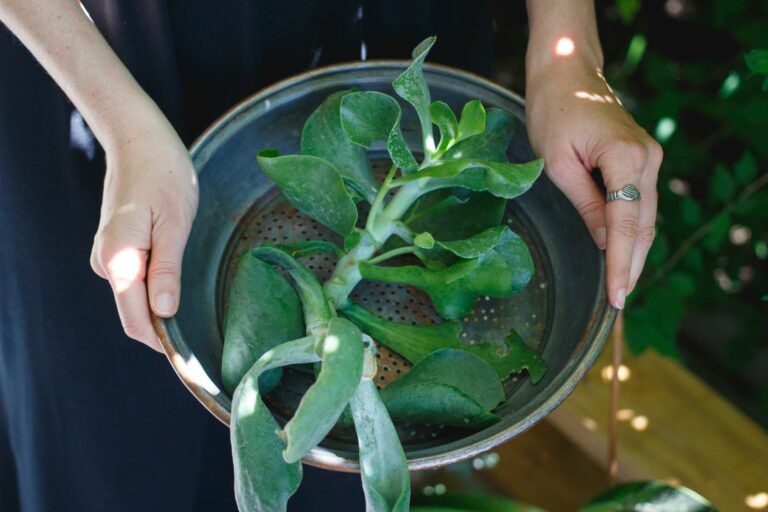If you are a succulent lover, you know that the plant can grow into different colors from green. Most people don’t know how to stress succulents to produce beautiful colors.
Succulents are beautiful, low-maintenance plants that have become increasingly popular in recent years. These plants are known for their fleshy leaves, stems, and roots, which allow them to store water and survive in arid environments. While succulents are often admired for their natural beauty, many plant enthusiasts seek to enhance the colors and patterns of these plants by stressing them.
Stressing succulents involves subjecting them to certain environmental conditions or growth practices that can trigger changes in their appearance. The stress can cause the plants to produce more pigments or alter their leaves’ size, shape, and texture. By inducing stress, you can create vibrant and unique color patterns not found in the plant’s natural state.
This guide will explore how to stress succulents to achieve beautiful and colorful plants. From altering the lighting conditions to adjusting the watering schedule, there are many ways to bring out the full potential of your succulent collection.
Whether you are a seasoned plant enthusiast or a beginner, this guide will provide you with practical tips and techniques to create stunning and healthy succulent plants.
What is succulent stress?
Succulent stress is the practice of placing a succulent plant in an environment outside its normal growing conditions. These conditions are harsh, and they force the plant to adapt to changes.
You can trigger color, shape, and texture changes by subjecting the plant to stress. These changes are a natural response of the plant to adapt to stressful conditions and can be used to create unique and attractive visual effects.
The stress forces a plant to produce anthocyanin and carotenoid pigments. These two pigments give the succulents their beautiful colors.
For instance, when you place a succulent plant in the hot sun, it becomes stressed and produces these two pigments that turn the leaves from green to red to protect themselves from the sun.
Too much stress can kill your plant. Ensure your plant can handle the stress you apply.
Signs of stress in succulents
As we have said, not all stress on a plant is good. It’s better to know the signs of stress in succulents to protect your plant from dying.
Good stress is moderate and often changes the color of leaves. It’s a sign that the plant is adapting to environmental changes.
On the other hand, if stress is severe, the succulent leaves will wilt or start falling off. When this happens, return the plant to its regular growing conditions, or else it will die. Other signs of severe stress include;
- Stretching
- Dropping leaves
- Soft or mushy leaves
- Leaning over
- Curling leaves.
Types of stress
Even though you don’t want to stress your succulents, you must know how to stress succulents to change their appearance. The different colors that a succulent produces bring comfort and joy to a room.
The types of stress are derived from the stressors you apply to a plant. Some common stressors include;
- Temperature stress
- Light stress
- Water stress
- Nutrients stress
- Pest stress
The different stressors affect succulents differently. You must identify the type of stress you are using, depending on the plant you have.
Tips on how to stress succulents safely
Before you think of stressing succulents, you must know the correct way. Here are the tips you can follow to stress plants safely.
- Choose healthy plants that can survive harsh environmental conditions. A healthy plant can recover quickly from any problem subjected to it.
- Choose the best type of succulent. Some succulents are sensitive to stress and can die if stressed. So, choose succulents native to the desert because they can endure stress well.
- Avoid subjecting the plant to sudden changes. The best way to stress your succulent is to gradually stress so that it has enough time to adapt to the new changes.
- Choose the right stressor. Some stressors, such as pests, can be harmful if you don’t treat them fully once you are done stressing. Always ensure the stressor you use is safe for your plants.
- Continuously monitor the plant. No matter how healthy your plant is, too much stress can kill it if you are not careful. Monitoring also ensures you catch any problems early and prevent them before they become bigger problems.
How to stress succulents to get beautiful succulents
Here are the common methods of stressing succulents.
- How to stress succulents in light
- How to stress succulents with water
- How to stress succulents with cold
- How to stress succulents with heat
How to stress succulents in light
Light stress involves stressing your succulents in full sun. You can move an indoor plant outdoors to receive direct sunlight.
And because most succulents like sunlight, ensure the location you place them receives plenty of sunlight. When you stress succulents in the sun, don’t let the sun burn or dehydrate them. Keep an eye on them.
There are two ways you can stress plants in the sun.
- First, you can place them in a hot spot for the better part of the day and remove them when they get too hot or dehydrated.
- Secondly, you can move them outdoors gradually by increasing the amount of time they are exposed to direct sunlight until they spend a whole day in the sun.
Monitor the plant and remove them when they can’t handle the conditions. You don’t want to kill that beautiful plant.
You can also choose to use grow lights to stress succulents. For instance, during winter, you don’t receive maximum sunlight. During this time, you can purchase a grow light to use indoors.
Succulents require a full spectrum grow light to thrive. So, when purchasing a grow light, ensure it emits all spectrum colors.
How to stress succulents with water
Stressing succulents using water can be very dangerous if you are not careful. The best way to do this is by underwatering.
Underwatering involves denying the plant water until the soil becomes completely dry before you water it. This makes the plant stressed because it doesn’t get enough water.
As a result, it will look for ways to adapt to these changes. They will then change their colors due to stress.
During this process, monitor your plant and ensure it doesn’t wilt. If they start to wilt, water them and leave the soil to dry again.
How to stress succulents with cold
You can stress your succulents by subjecting them to cold conditions. Place them in a room that experiences temperatures below 50 degrees Fahrenheit. Leave them in the cold for some time as you monitor them to avoid frost damage.
Succulents don’t like cold temperatures. So, if you subject them to cold temperatures, they will start to change color immediately, but you must be careful and ensure they don’t go dormant.
After the stress, they will change their color from green to either purple, red, or black.
How to stress succulents with heat
To stress the plant with heat, you need to place them in an area with temperatures above 80 degrees Fahrenheit. Leave them in the heat for some time as you monitor them closely to avoid damage.
Heat stress can cause them to change their color from green to yellow, orange, or red.
Extreme temperatures can kill your plant. Move them when the temperatures affect the plant negatively, and return them when they cool down.
Conclusion
These tips can help you produce colorful succulents for your home. Remember to follow the steps and to subject your plant gradually to stress. Don’t rush into things that can kill your plant without the proper knowledge.






